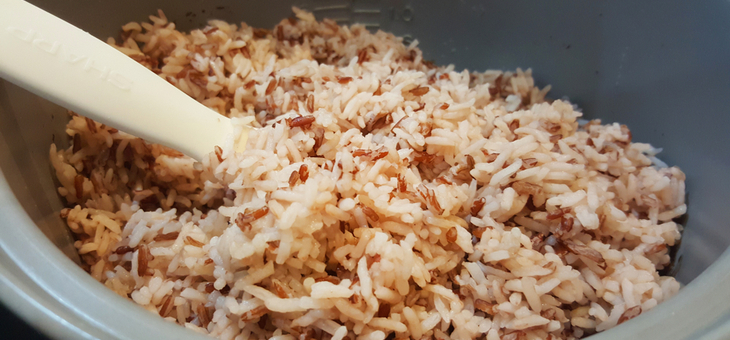Corn is the only staple that beats rice for global consumption, but Asia’s carb of choice comes with an unhealthy serving of heavy metal.
Arsenic, a naturally occurring heavy metal found virtually everywhere, is water soluble so easily bonds to grain growing in flooded rice paddies and we, in turn, ingest the heavy metal. Fish and seaweed are other common sources of arsenic in our diets but, aside from contaminated water, rice by far poses the biggest danger to health, especially to babies and toddlers, who are more susceptible to poisoning and whose carers may be unwittingly providing lots of arsenic via rice milk, baby cereal and rice snacks.
The heavy metal inhibits a wide variety of enzymes, and arsenic poisoning manifests as a host of upsetting symptoms including seizures, brain haemorrhages, vomiting, bloody diarrhoea, anaemia, muscle aches and hardening of the skin. Long-term effects include skin lesions, cancer, diabetes and lung disease.
It’s impossible to take the arsenic out of processed foods, but we can take steps to reduce our arsenic ingestion when cooking rice at home. It takes a little more time and water but it’s an easy fix, according to researchers from the University of Sheffield who tested different ways of cooking rice to remove arsenic from the grain.
The team was also concerned with retaining nutrients during cooking and report achieving both aims, using their “parboiling with absorption” method, which removes up to 50 per cent of the naturally occurring arsenic in brown rice, and 74 per cent in white rice, while retaining most of the grain’s nutrients.
To cook rice using the parboiling with the absorption method:
- Add water to a pot – using four cups of water for every cup of dry rice that you plan to cook – and bring the water to a boil.
- Add the rice to the boiling water and let the rice boil for five minutes.
- Drain and refresh the water, this time using two cups of water per cup of dry rice.
- Cook the rice on low to medium heat until all the water is absorbed.
Australians are consuming more rice than ever, about 300,000 tonnes a year, with roughly half imported (mostly long grain rice such as basmati and jasmine) and the other half grown here (mostly medium grain rice). Unfortunately our arsenic guidelines for rice grown in Australia are set at three times higher than recommended by the World Health Organization.
So it will pay to put this new method of cooking rice into our recipe books. Bon appetit!
Were you aware that rice contained arsenic? Will you start using the cooking method described? Or do you already cook rice that way?
If you enjoy our content, don’t keep it to yourself. Share our free eNews with your friends and encourage them to sign up.
Related articles:
https://www.yourlifechoices.com.au/food-recipes/food/foods-youve-been-eating-wrongly
https://www.yourlifechoices.com.au/health/wellbeing/nutrition/making-healthy-eating-more-affordable
https://www.yourlifechoices.com.au/health/wellbeing/clean-sleeping-wellness-trend

